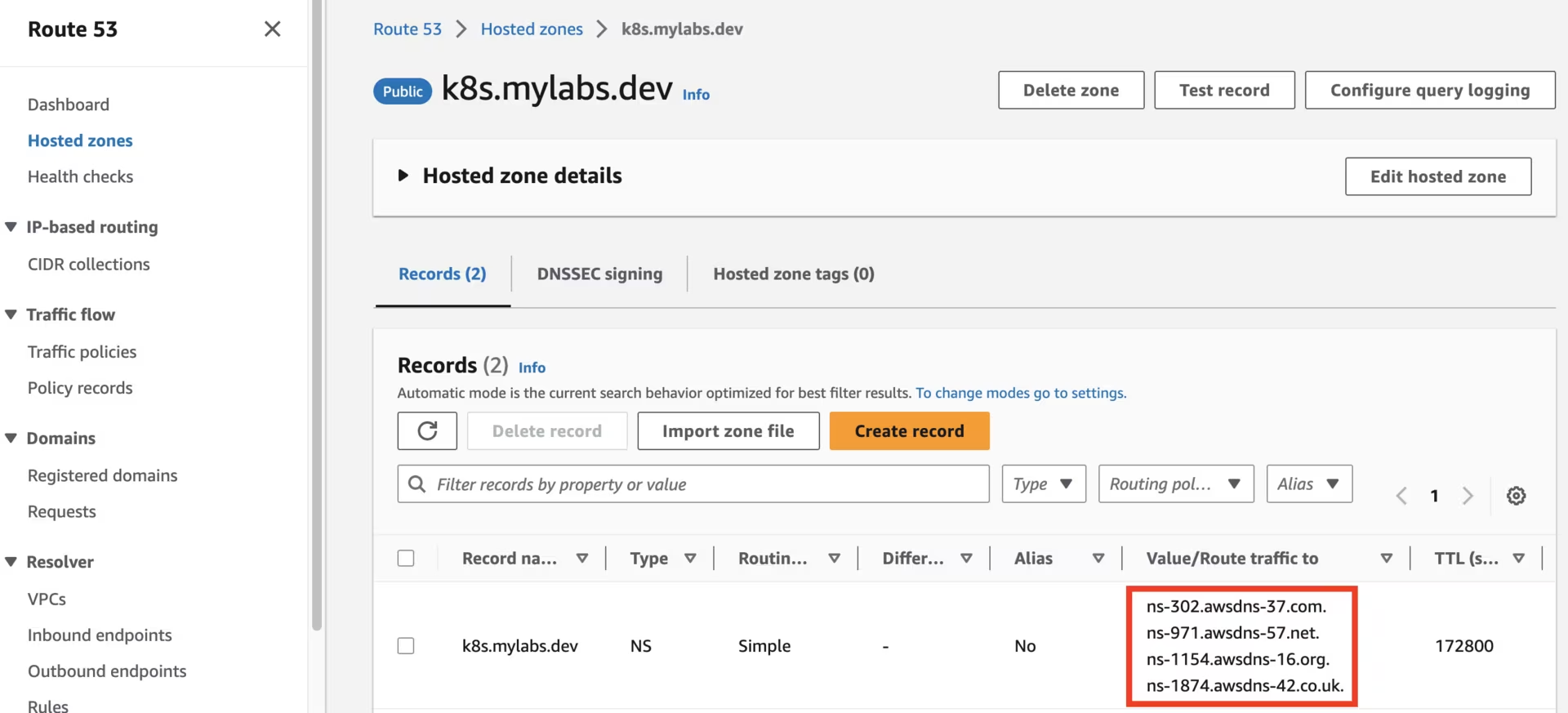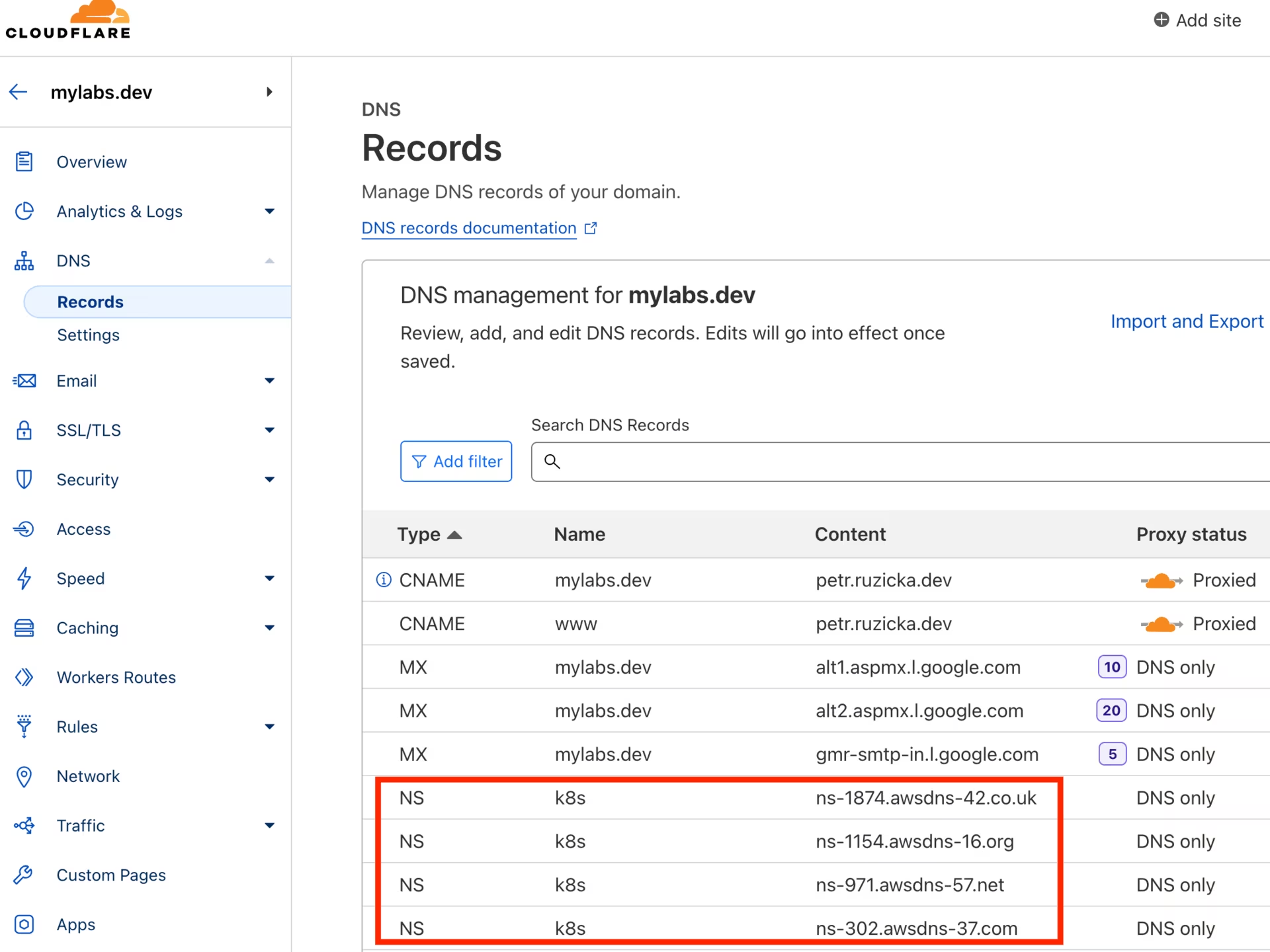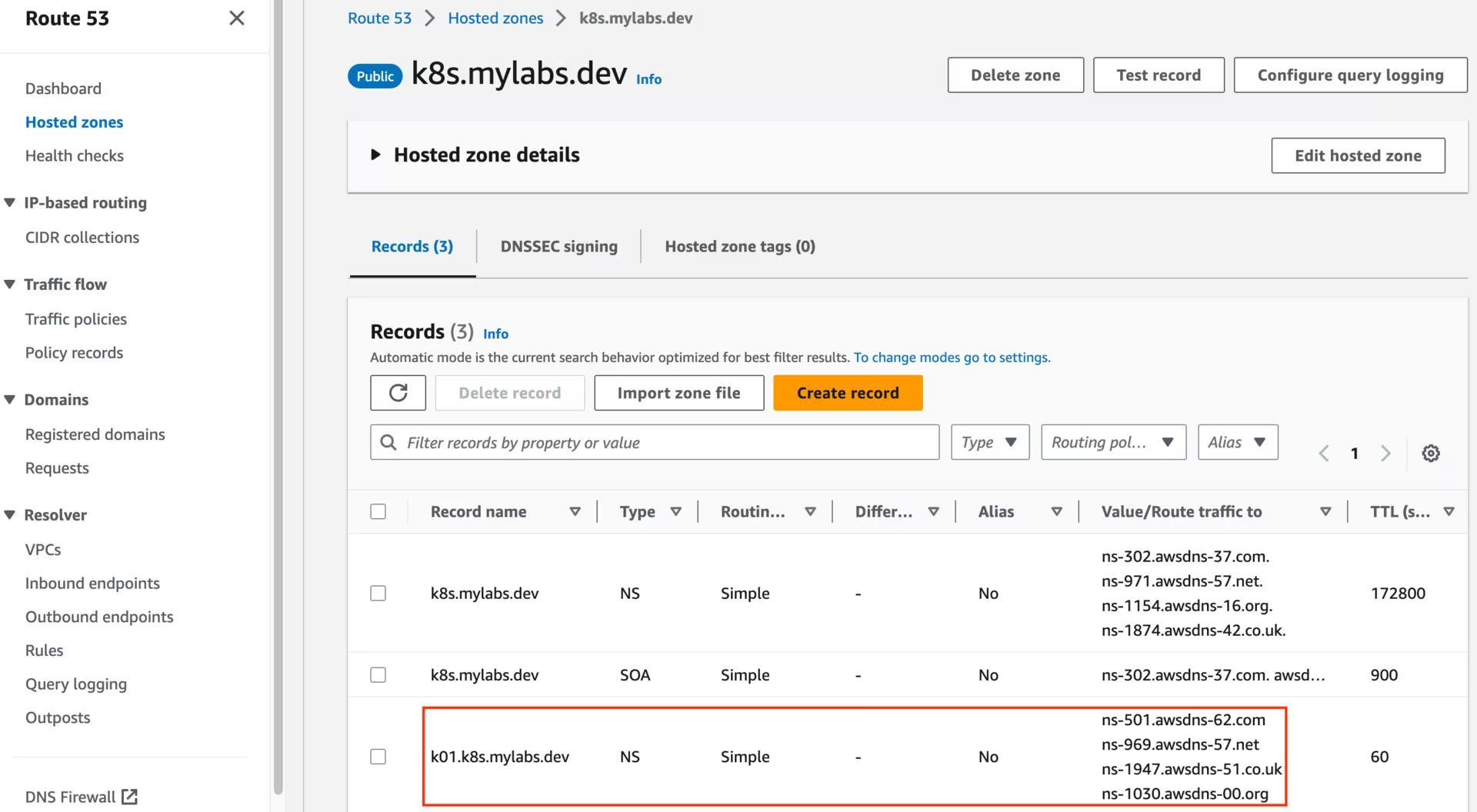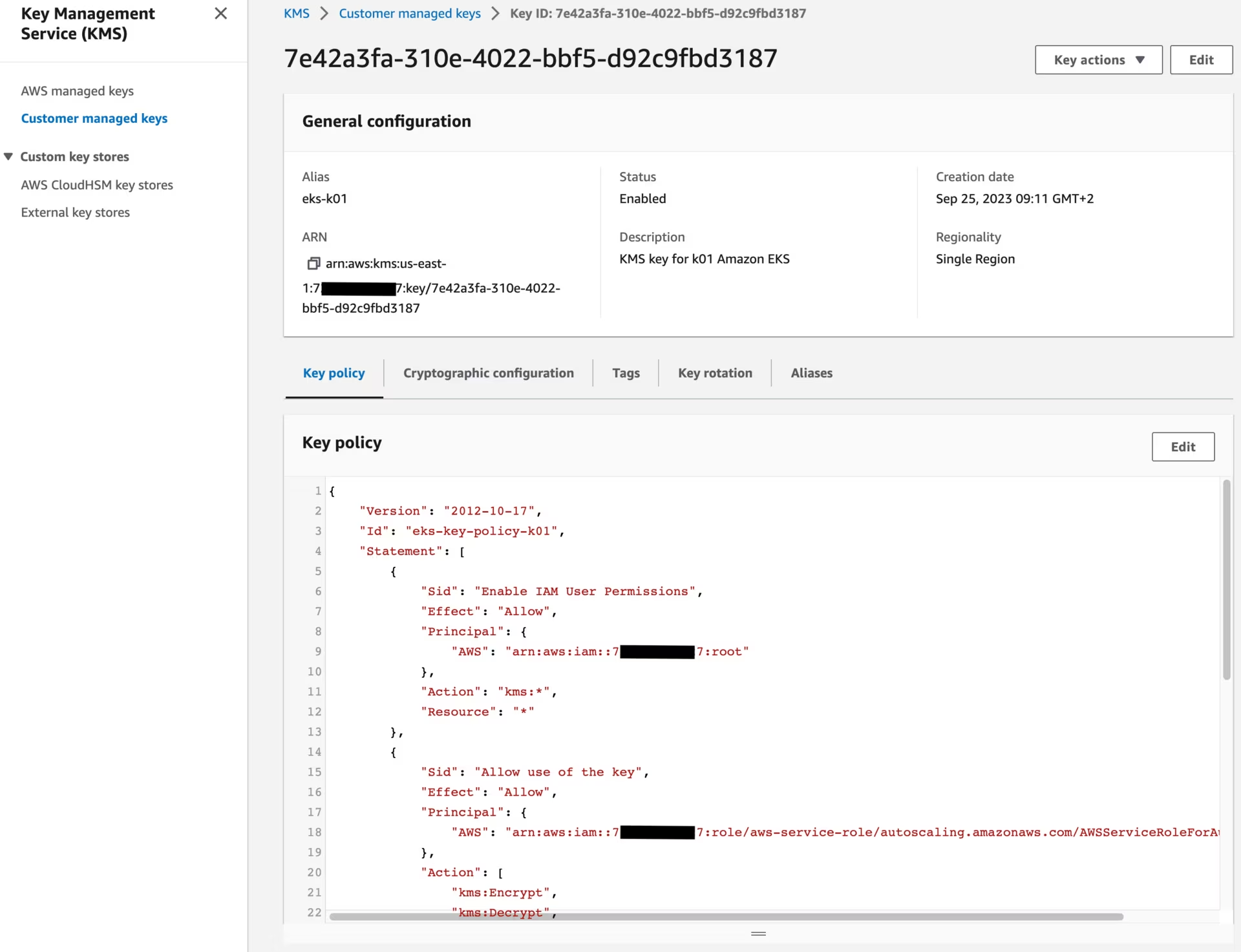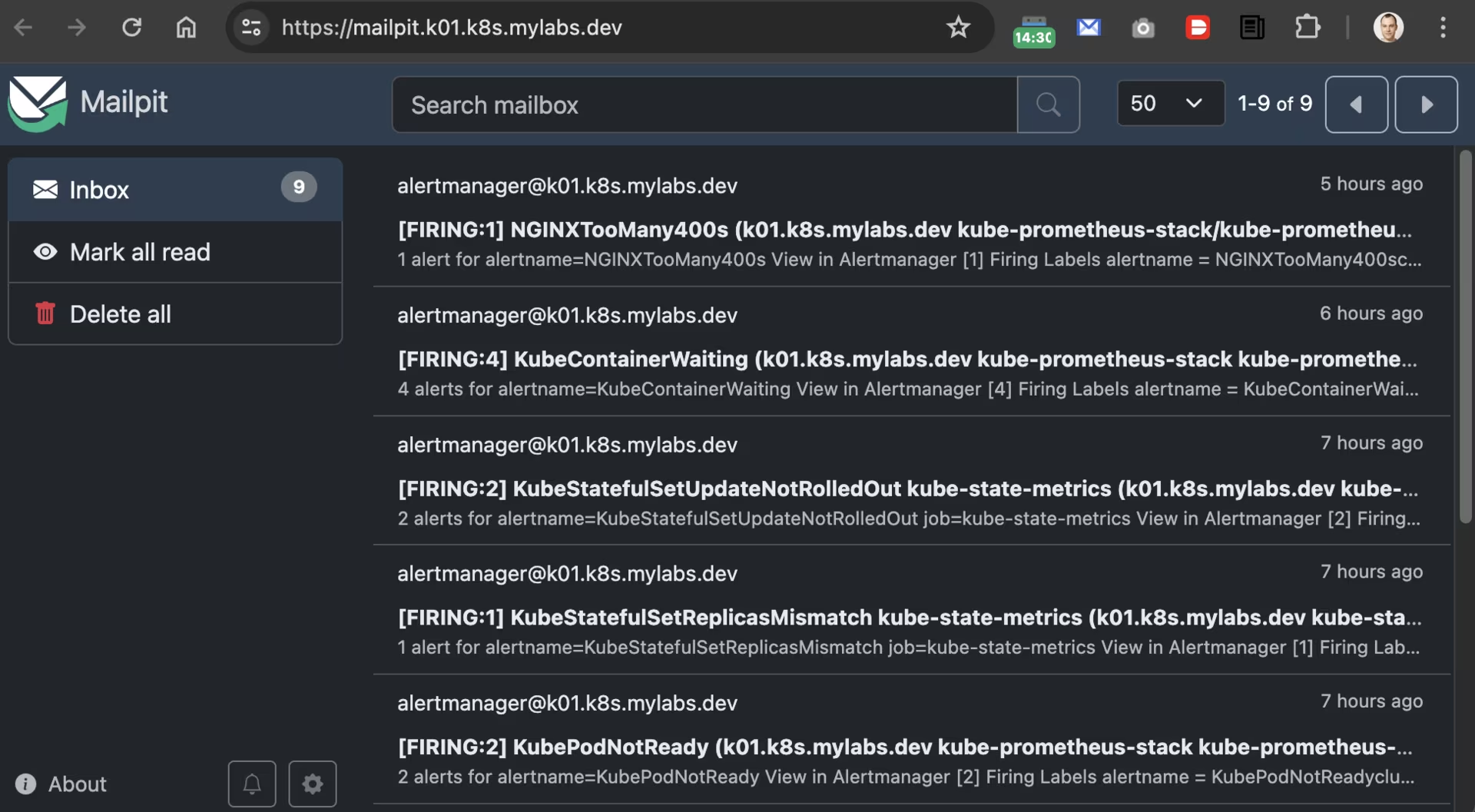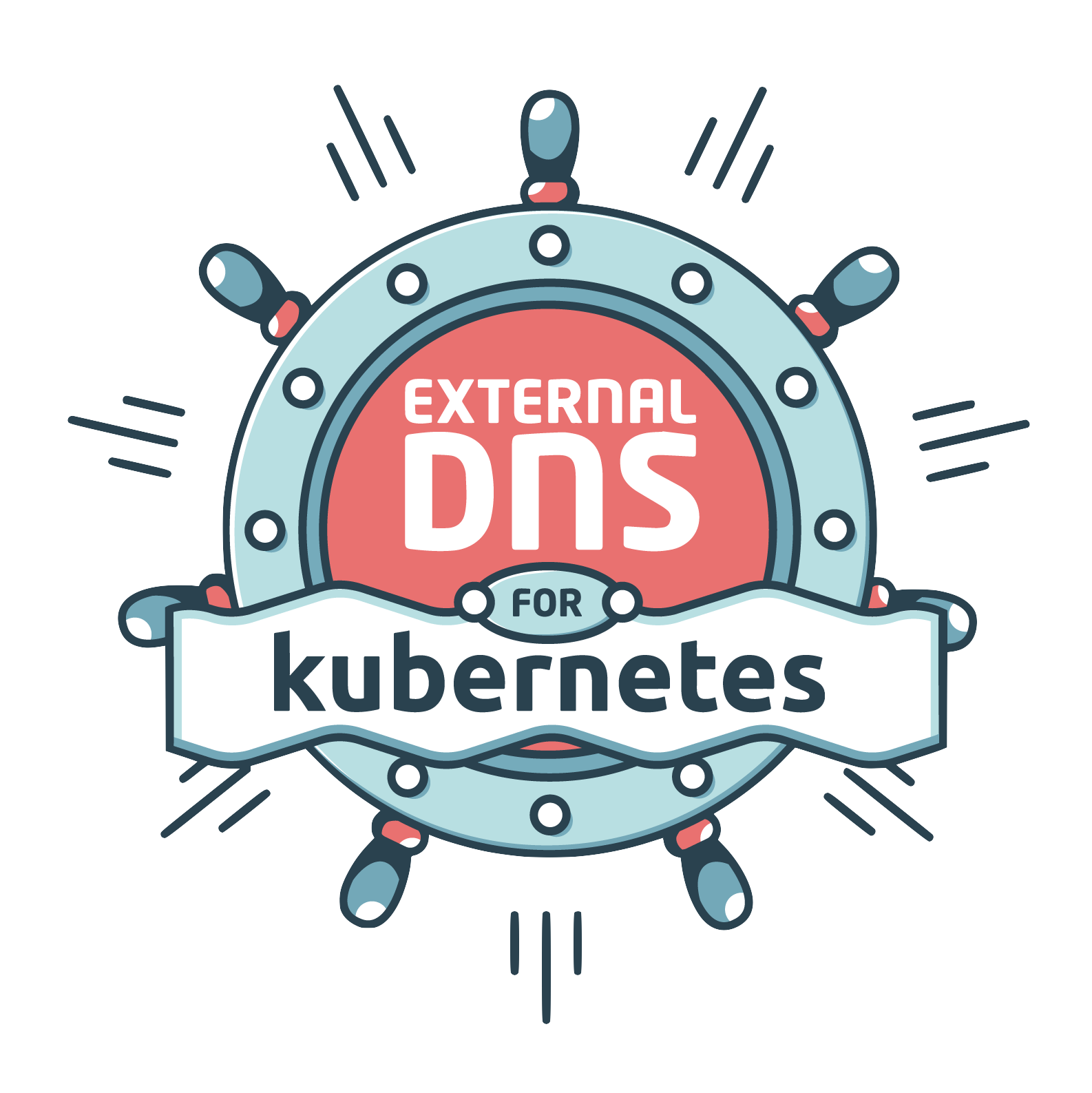Build secure and cheap Amazon EKS Auto Mode
Build "cheap and secure" Amazon EKS Auto Mode with network policies, cluster encryption and logging
I will outline the steps for setting up an Amazon EKS Auto Mode environment that is both cost-effective and prioritizes security, including the configuration of standard applications.
The Amazon EKS Auto Mode setup should align with the following cost-effectiveness criteria:
- Utilize two Availability Zones (AZs), or a single zone if possible, to reduce payments for cross-AZ traffic
- Spot instances
- Less expensive region -
us-east-1 - Most price efficient EC2 instance type
t4g.medium(2 x CPU, 4GB RAM) using AWS Graviton based on ARM - Use Bottlerocket OS for a minimal operating system, CPU, and memory footprint
- Use Network Load Balancer (NLB) as a most cost efficient + cost optimized load balancer
- Karpenter to enable automatic node scaling that matches the specific resource requirements of pods
The Amazon EKS Auto Mode setup should also meet the following security requirements:
- The Amazon EKS Auto Mode control plane must be encrypted using KMS
- Worker node EBS volumes must be encrypted
- Cluster logging to CloudWatch must be configured
Build Amazon EKS Auto Mode
Requirements
You will need to configure the AWS CLI and set up other necessary secrets and variables.
1
2
3
4
5
6
7
# AWS Credentials
export AWS_ACCESS_KEY_ID="xxxxxxxxxxxxxxxxxx"
export AWS_SECRET_ACCESS_KEY="xxxxxxxxxxxxxxxxxxxxxxxxxxxxxxxxxxxxxx"
export AWS_SESSION_TOKEN="xxxxxxxx"
export AWS_ROLE_TO_ASSUME="arn:aws:iam::7xxxxxxxxxx7:role/Gixxxxxxxxxxxxxxxxxxxxle"
export GOOGLE_CLIENT_ID="10xxxxxxxxxxxxxxxud.apps.googleusercontent.com"
export GOOGLE_CLIENT_SECRET="GOxxxxxxxxxxxxxxxtw"
If you plan to follow this document and its tasks, you will need to set up a few environment variables, such as:
1
2
3
4
5
6
7
8
9
10
11
12
13
14
15
16
# AWS Region
export AWS_REGION="${AWS_REGION:-us-east-1}"
# Hostname / FQDN definitions
export CLUSTER_FQDN="${CLUSTER_FQDN:-k01.k8s.mylabs.dev}"
# Base Domain: k8s.mylabs.dev
export BASE_DOMAIN="${CLUSTER_FQDN#*.}"
# Cluster Name: k01
export CLUSTER_NAME="${CLUSTER_FQDN%%.*}"
export MY_EMAIL="petr.ruzicka@gmail.com"
export TMP_DIR="${TMP_DIR:-${PWD}}"
export KUBECONFIG="${KUBECONFIG:-${TMP_DIR}/${CLUSTER_FQDN}/kubeconfig-${CLUSTER_NAME}.conf}"
# Tags used to tag the AWS resources
export TAGS="${TAGS:-Owner=${MY_EMAIL},Environment=dev,Cluster=${CLUSTER_FQDN}}"
export AWS_PARTITION="aws"
AWS_ACCOUNT_ID=$(aws sts get-caller-identity --query "Account" --output text) && export AWS_ACCOUNT_ID
mkdir -pv "${TMP_DIR}/${CLUSTER_FQDN}"
Confirm that all essential variables have been properly configured:
1
2
3
4
5
6
7
8
: "${AWS_ACCESS_KEY_ID?}"
: "${AWS_REGION?}"
: "${AWS_SECRET_ACCESS_KEY?}"
: "${AWS_ROLE_TO_ASSUME?}"
: "${GOOGLE_CLIENT_ID?}"
: "${GOOGLE_CLIENT_SECRET?}"
echo -e "${MY_EMAIL} | ${CLUSTER_NAME} | ${BASE_DOMAIN} | ${CLUSTER_FQDN}\n${TAGS}"
Install the required tools:
You can bypass these procedures if you already have all the essential software installed.
Configure AWS Route 53 Domain delegation
The DNS delegation tasks should be executed as a one-time operation.
Create a DNS zone for the EKS clusters:
1
2
3
4
5
6
7
export CLOUDFLARE_EMAIL="petr.ruzicka@gmail.com"
export CLOUDFLARE_API_KEY="1xxxxxxxxx0"
aws route53 create-hosted-zone --output json \
--name "${BASE_DOMAIN}" \
--caller-reference "$(date)" \
--hosted-zone-config="{\"Comment\": \"Created by petr.ruzicka@gmail.com\", \"PrivateZone\": false}" | jq
Utilize your domain registrar to update the nameservers for your zone (e.g., mylabs.dev) to point to Amazon Route 53 nameservers. Here’s how to discover the required Route 53 nameservers:
1
2
3
4
NEW_ZONE_ID=$(aws route53 list-hosted-zones --query "HostedZones[?Name==\`${BASE_DOMAIN}.\`].Id" --output text)
NEW_ZONE_NS=$(aws route53 get-hosted-zone --output json --id "${NEW_ZONE_ID}" --query "DelegationSet.NameServers")
NEW_ZONE_NS1=$(echo "${NEW_ZONE_NS}" | jq -r ".[0]")
NEW_ZONE_NS2=$(echo "${NEW_ZONE_NS}" | jq -r ".[1]")
Establish the NS record in k8s.mylabs.dev (your BASE_DOMAIN) for proper zone delegation. This operation’s specifics may vary based on your domain registrar; I use Cloudflare and employ Ansible for automation:
1
2
ansible -m cloudflare_dns -c local -i "localhost," localhost -a "zone=mylabs.dev record=${BASE_DOMAIN} type=NS value=${NEW_ZONE_NS1} solo=true proxied=no account_email=${CLOUDFLARE_EMAIL} account_api_token=${CLOUDFLARE_API_KEY}"
ansible -m cloudflare_dns -c local -i "localhost," localhost -a "zone=mylabs.dev record=${BASE_DOMAIN} type=NS value=${NEW_ZONE_NS2} solo=false proxied=no account_email=${CLOUDFLARE_EMAIL} account_api_token=${CLOUDFLARE_API_KEY}"
1
2
3
4
5
6
7
8
9
10
11
12
13
14
15
16
17
18
19
20
21
22
23
24
25
26
27
28
29
30
31
32
33
34
35
36
37
38
39
40
41
42
43
44
45
46
47
48
49
50
51
52
53
54
55
56
localhost | CHANGED => {
"ansible_facts": {
"discovered_interpreter_python": "/usr/bin/python"
},
"changed": true,
"result": {
"record": {
"content": "ns-885.awsdns-46.net",
"created_on": "2020-11-13T06:25:32.18642Z",
"id": "dxxxxxxxxxxxxxxxxxxxxxxxxxxxxxxb",
"locked": false,
"meta": {
"auto_added": false,
"managed_by_apps": false,
"managed_by_argo_tunnel": false,
"source": "primary"
},
"modified_on": "2020-11-13T06:25:32.18642Z",
"name": "k8s.mylabs.dev",
"proxiable": false,
"proxied": false,
"ttl": 1,
"type": "NS",
"zone_id": "2xxxxxxxxxxxxxxxxxxxxxxxxxxxxxxe",
"zone_name": "mylabs.dev"
}
}
}
localhost | CHANGED => {
"ansible_facts": {
"discovered_interpreter_python": "/usr/bin/python"
},
"changed": true,
"result": {
"record": {
"content": "ns-1692.awsdns-19.co.uk",
"created_on": "2020-11-13T06:25:37.605605Z",
"id": "9xxxxxxxxxxxxxxxxxxxxxxxxxxxxxxb",
"locked": false,
"meta": {
"auto_added": false,
"managed_by_apps": false,
"managed_by_argo_tunnel": false,
"source": "primary"
},
"modified_on": "2020-11-13T06:25:37.605605Z",
"name": "k8s.mylabs.dev",
"proxiable": false,
"proxied": false,
"ttl": 1,
"type": "NS",
"zone_id": "2xxxxxxxxxxxxxxxxxxxxxxxxxxxxxxe",
"zone_name": "mylabs.dev"
}
}
}
Create the service-linked role
Creating the service-linked role for Spot Instances is a one-time operation.
Create the AWSServiceRoleForEC2Spot role to use Spot Instances in the Amazon EKS cluster:
1
aws iam create-service-linked-role --aws-service-name spot.amazonaws.com
Details: Work with Spot Instances
Create Route53 zone and KMS key infrastructure
Generate a CloudFormation template that defines an Amazon Route 53 zone and an AWS Key Management Service (KMS) key.
Add the new domain CLUSTER_FQDN to Route 53, and set up DNS delegation from the BASE_DOMAIN.
1
2
3
4
5
6
7
8
9
10
11
12
13
14
15
16
17
18
19
20
21
22
23
24
25
26
27
28
29
30
31
32
33
34
35
36
37
38
39
40
41
42
43
44
45
46
47
48
49
50
51
52
53
54
55
56
57
58
59
60
61
62
63
64
65
66
67
68
69
70
71
72
73
74
75
76
77
78
79
80
81
82
83
84
85
86
87
88
89
tee "${TMP_DIR}/${CLUSTER_FQDN}/aws-cf-route53-kms.yml" << \EOF
AWSTemplateFormatVersion: 2010-09-09
Description: Route53 entries and KMS key
Parameters:
BaseDomain:
Description: "Base domain where cluster domains + their subdomains will live - Ex: k8s.mylabs.dev"
Type: String
ClusterFQDN:
Description: "Cluster FQDN (domain for all applications) - Ex: k01.k8s.mylabs.dev"
Type: String
ClusterName:
Description: "Cluster Name - Ex: k01"
Type: String
Resources:
HostedZone:
Type: AWS::Route53::HostedZone
Properties:
Name: !Ref ClusterFQDN
RecordSet:
Type: AWS::Route53::RecordSet
Properties:
HostedZoneName: !Sub "${BaseDomain}."
Name: !Ref ClusterFQDN
Type: NS
TTL: 60
ResourceRecords: !GetAtt HostedZone.NameServers
KMSAlias:
Type: AWS::KMS::Alias
Properties:
AliasName: !Sub "alias/eks-${ClusterName}"
TargetKeyId: !Ref KMSKey
KMSKey:
Type: AWS::KMS::Key
Properties:
Description: !Sub "KMS key for ${ClusterName} Amazon EKS"
EnableKeyRotation: true
PendingWindowInDays: 7
KeyPolicy:
Version: "2012-10-17"
Id: !Sub "eks-key-policy-${ClusterName}"
Statement:
- Sid: Allow direct access to key metadata to the account
Effect: Allow
Principal:
AWS:
- !Sub "arn:${AWS::Partition}:iam::${AWS::AccountId}:root"
Action:
- kms:*
Resource: "*"
- Sid: Allow access through EBS for all principals in the account that are authorized to use EBS
Effect: Allow
Principal:
AWS: "*"
Action:
- kms:Encrypt
- kms:Decrypt
- kms:ReEncrypt*
- kms:GenerateDataKey*
- kms:CreateGrant
- kms:DescribeKey
Resource: "*"
Condition:
StringEquals:
kms:ViaService: !Sub "ec2.${AWS::Region}.amazonaws.com"
kms:CallerAccount: !Sub "${AWS::AccountId}"
Outputs:
KMSKeyArn:
Description: The ARN of the created KMS Key to encrypt EKS related services
Value: !GetAtt KMSKey.Arn
Export:
Name:
Fn::Sub: "${AWS::StackName}-KMSKeyArn"
KMSKeyId:
Description: The ID of the created KMS Key to encrypt EKS related services
Value: !Ref KMSKey
Export:
Name:
Fn::Sub: "${AWS::StackName}-KMSKeyId"
EOF
# shellcheck disable=SC2001
eval aws cloudformation deploy --capabilities CAPABILITY_NAMED_IAM \
--parameter-overrides "BaseDomain=${BASE_DOMAIN} ClusterFQDN=${CLUSTER_FQDN} ClusterName=${CLUSTER_NAME}" \
--stack-name "${CLUSTER_NAME}-route53-kms" --template-file "${TMP_DIR}/${CLUSTER_FQDN}/aws-cf-route53-kms.yml" --tags "${TAGS//,/ }"
AWS_CLOUDFORMATION_DETAILS=$(aws cloudformation describe-stacks --stack-name "${CLUSTER_NAME}-route53-kms" --query "Stacks[0].Outputs[? OutputKey==\`KMSKeyArn\` || OutputKey==\`KMSKeyId\`].{OutputKey:OutputKey,OutputValue:OutputValue}")
AWS_KMS_KEY_ARN=$(echo "${AWS_CLOUDFORMATION_DETAILS}" | jq -r ".[] | select(.OutputKey==\"KMSKeyArn\") .OutputValue")
AWS_KMS_KEY_ID=$(echo "${AWS_CLOUDFORMATION_DETAILS}" | jq -r ".[] | select(.OutputKey==\"KMSKeyId\") .OutputValue")
After running the CloudFormation stack, you should see the following Route53 zones:
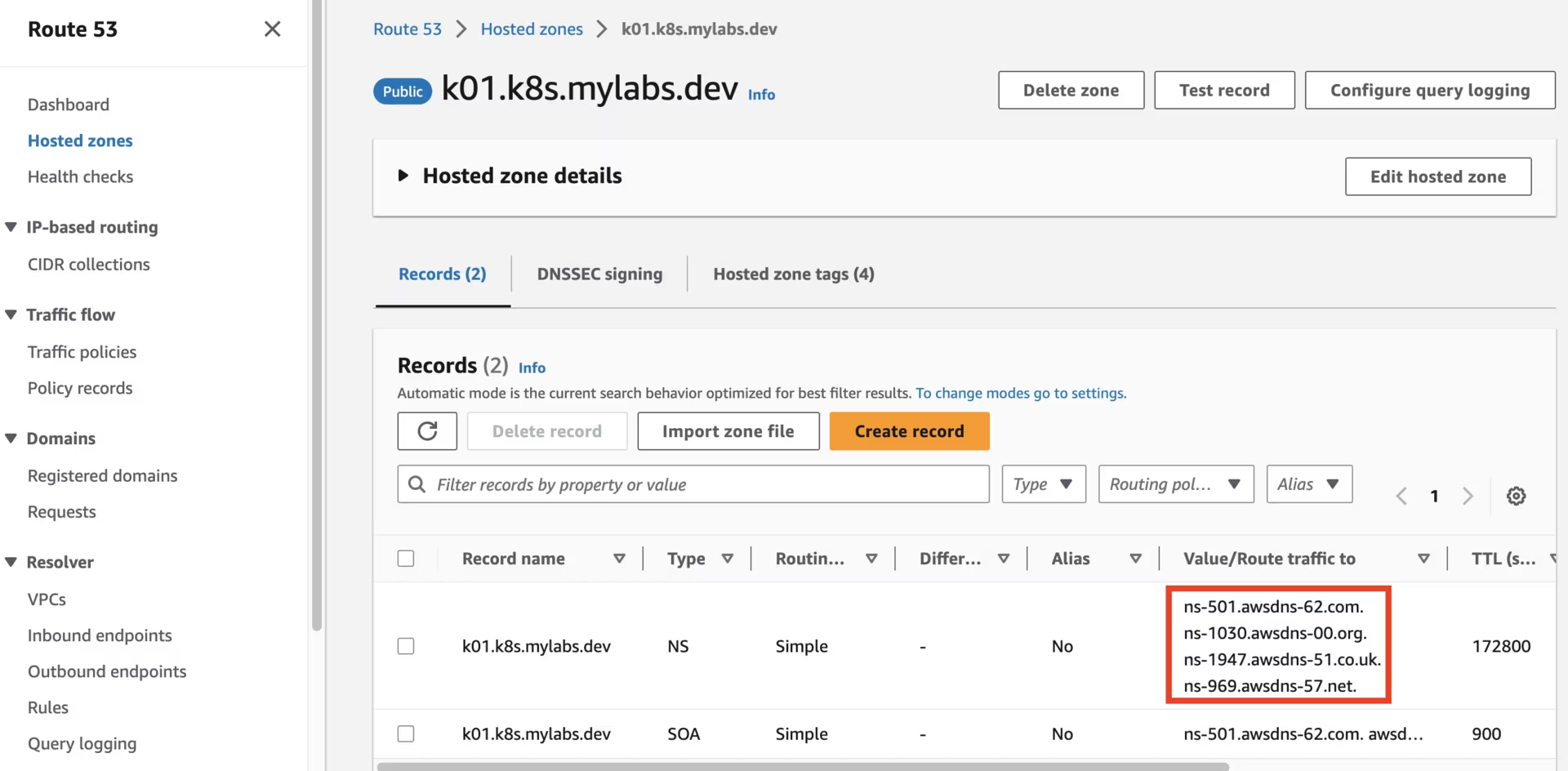 Route53 k01.k8s.mylabs.dev zone
Route53 k01.k8s.mylabs.dev zone
You should also see the following KMS key:
Create Amazon EKS Auto Mode
I will use eksctl to create the Amazon EKS Auto Mode cluster.
1
2
3
4
5
6
7
8
9
10
11
12
13
14
15
16
17
18
19
20
21
22
23
24
25
26
27
28
29
30
31
32
33
34
35
36
37
38
39
40
41
42
43
44
tee "${TMP_DIR}/${CLUSTER_FQDN}/eksctl-${CLUSTER_NAME}.yml" << EOF
apiVersion: eksctl.io/v1alpha5
kind: ClusterConfig
metadata:
name: ${CLUSTER_NAME}
region: ${AWS_REGION}
tags:
$(echo "${TAGS}" | sed "s/,/\\n /g; s/=/: /g")
availabilityZones:
- ${AWS_REGION}a
- ${AWS_REGION}b
accessConfig:
accessEntries:
- principalARN: arn:${AWS_PARTITION}:iam::${AWS_ACCOUNT_ID}:role/admin
accessPolicies:
- policyARN: arn:${AWS_PARTITION}:eks::aws:cluster-access-policy/AmazonEKSClusterAdminPolicy
accessScope:
type: cluster
iam:
podIdentityAssociations:
- namespace: cert-manager
serviceAccountName: cert-manager
roleName: eksctl-${CLUSTER_NAME}-pia-cert-manager
wellKnownPolicies:
certManager: true
- namespace: external-dns
serviceAccountName: external-dns
roleName: eksctl-${CLUSTER_NAME}-pia-external-dns
wellKnownPolicies:
externalDNS: true
addons:
- name: eks-pod-identity-agent
autoModeConfig:
enabled: true
nodePools: ["system"]
secretsEncryption:
keyARN: ${AWS_KMS_KEY_ARN}
cloudWatch:
clusterLogging:
logRetentionInDays: 1
enableTypes:
- all
EOF
eksctl create cluster --config-file "${TMP_DIR}/${CLUSTER_FQDN}/eksctl-${CLUSTER_NAME}.yml" --kubeconfig "${KUBECONFIG}" || eksctl utils write-kubeconfig --cluster="${CLUSTER_NAME}" --kubeconfig "${KUBECONFIG}"
Enhance the security posture of the EKS cluster by addressing the following concerns:
1
2
3
AWS_VPC_ID=$(aws ec2 describe-vpcs --filters "Name=tag:alpha.eksctl.io/cluster-name,Values=${CLUSTER_NAME}" --query 'Vpcs[*].VpcId' --output text)
AWS_SECURITY_GROUP_ID=$(aws ec2 describe-security-groups --filters "Name=vpc-id,Values=${AWS_VPC_ID}" "Name=group-name,Values=default" --query 'SecurityGroups[*].GroupId' --output text)
AWS_NACL_ID=$(aws ec2 describe-network-acls --filters "Name=vpc-id,Values=${AWS_VPC_ID}" --query 'NetworkAcls[*].NetworkAclId' --output text)
The default security group should have no rules configured:
1 2
aws ec2 revoke-security-group-egress --group-id "${AWS_SECURITY_GROUP_ID}" --protocol all --port all --cidr 0.0.0.0/0 | jq || true aws ec2 revoke-security-group-ingress --group-id "${AWS_SECURITY_GROUP_ID}" --protocol all --port all --source-group "${AWS_SECURITY_GROUP_ID}" | jq || true
The VPC NACL allows unrestricted SSH access, and the VPC NACL allows unrestricted RDP access:
1 2
aws ec2 create-network-acl-entry --network-acl-id "${AWS_NACL_ID}" --ingress --rule-number 1 --protocol tcp --port-range "From=22,To=22" --cidr-block 0.0.0.0/0 --rule-action Deny aws ec2 create-network-acl-entry --network-acl-id "${AWS_NACL_ID}" --ingress --rule-number 2 --protocol tcp --port-range "From=3389,To=3389" --cidr-block 0.0.0.0/0 --rule-action Deny
The VPC should have Route 53 DNS resolver with logging enabled:
1 2 3 4 5 6 7 8 9
AWS_CLUSTER_LOG_GROUP_ARN=$(aws logs describe-log-groups --query "logGroups[?logGroupName=='/aws/eks/${CLUSTER_NAME}/cluster'].arn" --output text) AWS_CLUSTER_ROUTE53_RESOLVER_QUERY_LOG_CONFIG_ID=$(aws route53resolver create-resolver-query-log-config \ --name "${CLUSTER_NAME}-vpc-dns-logs" \ --destination-arn "${AWS_CLUSTER_LOG_GROUP_ARN}" \ --creator-request-id "$(uuidgen)" --query 'ResolverQueryLogConfig.Id' --output text) aws route53resolver associate-resolver-query-log-config \ --resolver-query-log-config-id "${AWS_CLUSTER_ROUTE53_RESOLVER_QUERY_LOG_CONFIG_ID}" \ --resource-id "${AWS_VPC_ID}"
I was not able to get NetworkPolicy working correctly with kube-prometheus-stack in EKS Auto Mode. Prometheus was encountering a dial tcp 10.100.0.1:443: i/o timeout error and could not retrieve metric data. Therefore, I will keep NetworkPolicy turned off for this setup.
Create a Node Class for Amazon EKS. This defines infrastructure-level settings that apply to groups of nodes in your EKS cluster, including network configuration, storage settings, and resource tagging:
1
2
3
4
5
6
7
8
9
10
11
12
13
tee "${TMP_DIR}/${CLUSTER_FQDN}/k8s-eks-nodeclass.yml" << EOF | kubectl apply -f -
apiVersion: eks.amazonaws.com/v1
kind: NodeClass
metadata:
name: my-default
spec:
$(kubectl get nodeclasses default -o yaml | yq '.spec | pick(["role", "securityGroupSelectorTerms", "subnetSelectorTerms"])' | sed 's/\(.*\)/ \1/')
ephemeralStorage:
size: 20Gi
# https://github.com/eksctl-io/eksctl/issues/8136
# tags:
# Name: ${CLUSTER_NAME}
EOF
Create a Node Pool for EKS Auto Mode. This defines specific requirements for your compute resources, including instance types, availability zones, architectures, and capacity types:
1
2
3
4
5
6
7
8
9
10
11
12
13
14
15
16
17
18
19
20
21
22
23
24
25
26
27
28
29
30
31
32
tee "${TMP_DIR}/${CLUSTER_FQDN}/k8s-karpenter-nodepool.yml" << EOF | kubectl apply -f -
apiVersion: karpenter.sh/v1
kind: NodePool
metadata:
name: my-default
spec:
template:
spec:
nodeClassRef:
group: eks.amazonaws.com
kind: NodeClass
name: my-default
requirements:
- key: eks.amazonaws.com/instance-category
operator: In
values: ["t"]
- key: karpenter.sh/capacity-type
operator: In
values: ["spot", "on-demand"]
- key: topology.kubernetes.io/zone
operator: In
values: ["${AWS_REGION}a"]
- key: kubernetes.io/arch
operator: In
values: ["arm64"]
- key: kubernetes.io/os
operator: In
values: ["linux"]
limits:
cpu: 8
memory: 32Gi
EOF
Create a new StorageClass based on the EBS CSI driver:
1
2
3
4
5
6
7
8
9
10
11
12
13
14
15
tee "${TMP_DIR}/${CLUSTER_FQDN}/k8s-storage-storageclass.yml" << EOF | kubectl apply -f -
apiVersion: storage.k8s.io/v1
kind: StorageClass
metadata:
annotations:
storageclass.kubernetes.io/is-default-class: "true"
name: gp3
provisioner: ebs.csi.eks.amazonaws.com
# https://github.com/kubernetes-sigs/aws-ebs-csi-driver/blob/master/docs/parameters.md
parameters:
kmsKeyId: ${AWS_KMS_KEY_ID}
reclaimPolicy: Delete
volumeBindingMode: WaitForFirstConsumer
allowVolumeExpansion: true
EOF
Mailpit
Mailpit will be used to receive email alerts from Prometheus.
Install the mailpit Helm chart and modify its default values:
1
2
3
4
5
6
7
8
9
10
11
12
13
14
15
16
17
18
19
# renovate: datasource=helm depName=mailpit registryUrl=https://jouve.github.io/charts/
MAILPIT_HELM_CHART_VERSION="0.21.0"
helm repo add --force-update jouve https://jouve.github.io/charts/
tee "${TMP_DIR}/${CLUSTER_FQDN}/helm_values-mailpit.yml" << EOF
ingress:
enabled: true
ingressClassName: nginx
annotations:
gethomepage.dev/enabled: "true"
gethomepage.dev/description: An email and SMTP testing tool with API for developers
gethomepage.dev/group: Apps
gethomepage.dev/icon: https://raw.githubusercontent.com/axllent/mailpit/61241f11ac94eb33bd84e399129992250eff56ce/server/ui/favicon.svg
gethomepage.dev/name: Mailpit
nginx.ingress.kubernetes.io/auth-url: https://oauth2-proxy.${CLUSTER_FQDN}/oauth2/auth
nginx.ingress.kubernetes.io/auth-signin: https://oauth2-proxy.${CLUSTER_FQDN}/oauth2/start?rd=\$scheme://\$host\$request_uri
hostname: mailpit.${CLUSTER_FQDN}
EOF
helm upgrade --install --version "${MAILPIT_HELM_CHART_VERSION}" --namespace mailpit --create-namespace --values "${TMP_DIR}/${CLUSTER_FQDN}/helm_values-mailpit.yml" mailpit jouve/mailpit
Screenshot:
kube-prometheus-stack
Prometheus should be one of the initial applications installed on the Kubernetes cluster because numerous Kubernetes services and applications can export metrics to it.
The kube-prometheus-stack is a collection of Kubernetes manifests, Grafana dashboards, and Prometheus rules. It’s combined with documentation and scripts to provide easy-to-operate, end-to-end Kubernetes cluster monitoring with Prometheus using the Prometheus Operator.
Install the kube-prometheus-stack Helm chart and modify its default values:
1
2
3
4
5
6
7
8
9
10
11
12
13
14
15
16
17
18
19
20
21
22
23
24
25
26
27
28
29
30
31
32
33
34
35
36
37
38
39
40
41
42
43
44
45
46
47
48
49
50
51
52
53
54
55
56
57
58
59
60
61
62
63
64
65
66
67
68
69
70
71
72
73
74
75
76
77
78
79
80
81
82
83
84
85
86
87
88
89
90
91
92
93
94
95
96
97
98
99
100
101
102
103
104
105
106
107
108
109
110
111
112
113
114
115
116
117
118
119
120
121
122
123
124
125
126
127
128
129
130
131
132
133
134
135
136
137
138
139
140
141
142
143
144
145
146
147
148
149
150
151
152
153
154
155
156
157
158
159
160
161
162
163
164
165
166
167
168
169
170
171
172
173
174
175
176
177
178
179
180
181
182
183
184
185
186
187
188
189
190
191
192
193
194
195
196
197
198
199
200
201
202
203
204
205
206
207
208
209
210
211
212
213
214
215
216
217
218
219
220
221
222
223
224
225
226
227
228
229
230
231
232
233
234
235
236
237
238
239
240
241
242
243
244
245
246
247
# renovate: datasource=helm depName=kube-prometheus-stack registryUrl=https://prometheus-community.github.io/helm-charts
KUBE_PROMETHEUS_STACK_HELM_CHART_VERSION="67.9.0"
helm repo add --force-update prometheus-community https://prometheus-community.github.io/helm-charts
tee "${TMP_DIR}/${CLUSTER_FQDN}/helm_values-kube-prometheus-stack.yml" << EOF
defaultRules:
rules:
etcd: false
kubernetesSystem: false
kubeScheduler: false
# https://github.com/prometheus-community/helm-charts/blob/main/charts/alertmanager/values.yaml
alertmanager:
config:
global:
smtp_smarthost: "mailpit-smtp.mailpit.svc.cluster.local:25"
smtp_from: "alertmanager@${CLUSTER_FQDN}"
route:
group_by: ["alertname", "job"]
receiver: email
routes:
- receiver: email
matchers:
- severity =~ "warning|critical"
receivers:
- name: email
email_configs:
- to: "notification@${CLUSTER_FQDN}"
require_tls: false
ingress:
enabled: true
ingressClassName: nginx
annotations:
gethomepage.dev/enabled: "true"
gethomepage.dev/description: Alert Routing System
gethomepage.dev/group: Observability
gethomepage.dev/icon: alertmanager.svg
gethomepage.dev/name: Alert Manager
gethomepage.dev/app: alertmanager
gethomepage.dev/pod-selector: "app.kubernetes.io/name=alertmanager"
nginx.ingress.kubernetes.io/auth-url: https://oauth2-proxy.${CLUSTER_FQDN}/oauth2/auth
nginx.ingress.kubernetes.io/auth-signin: https://oauth2-proxy.${CLUSTER_FQDN}/oauth2/start?rd=\$scheme://\$host\$request_uri
hosts:
- alertmanager.${CLUSTER_FQDN}
paths: ["/"]
pathType: ImplementationSpecific
tls:
- hosts:
- alertmanager.${CLUSTER_FQDN}
# https://github.com/grafana/helm-charts/blob/main/charts/grafana/values.yaml
grafana:
defaultDashboardsEnabled: false
ingress:
enabled: true
ingressClassName: nginx
annotations:
gethomepage.dev/description: Visualization Platform
gethomepage.dev/enabled: "true"
gethomepage.dev/group: Observability
gethomepage.dev/icon: grafana.svg
gethomepage.dev/name: Grafana
gethomepage.dev/app: grafana
gethomepage.dev/pod-selector: "app.kubernetes.io/name=grafana"
nginx.ingress.kubernetes.io/auth-url: https://oauth2-proxy.${CLUSTER_FQDN}/oauth2/auth
nginx.ingress.kubernetes.io/auth-signin: https://oauth2-proxy.${CLUSTER_FQDN}/oauth2/start?rd=\$scheme://\$host\$request_uri
nginx.ingress.kubernetes.io/configuration-snippet: |
auth_request_set \$email \$upstream_http_x_auth_request_email;
proxy_set_header X-Email \$email;
hosts:
- grafana.${CLUSTER_FQDN}
paths: ["/"]
pathType: ImplementationSpecific
tls:
- hosts:
- grafana.${CLUSTER_FQDN}
sidecar:
datasources:
url: http://kube-prometheus-stack-prometheus.kube-prometheus-stack:9090
dashboardProviders:
dashboardproviders.yaml:
apiVersion: 1
providers:
- name: "default"
orgId: 1
folder: ""
type: file
disableDeletion: false
editable: true
options:
path: /var/lib/grafana/dashboards/default
dashboards:
default:
# keep-sorted start numeric=yes
1860-node-exporter-full:
# renovate: depName="Node Exporter Full"
gnetId: 1860
revision: 37
datasource: Prometheus
3662-prometheus-2-0-overview:
# renovate: depName="Prometheus 2.0 Overview"
gnetId: 3662
revision: 2
datasource: Prometheus
9614-nginx-ingress-controller:
# renovate: depName="NGINX Ingress controller"
gnetId: 9614
revision: 1
datasource: Prometheus
12006-kubernetes-apiserver:
# renovate: depName="Kubernetes apiserver"
gnetId: 12006
revision: 1
datasource: Prometheus
# https://github.com/DevOps-Nirvana/Grafana-Dashboards
14314-kubernetes-nginx-ingress-controller-nextgen-devops-nirvana:
# renovate: depName="Kubernetes Nginx Ingress Prometheus NextGen"
gnetId: 14314
revision: 2
datasource: Prometheus
15038-external-dns:
# renovate: depName="External-dns"
gnetId: 15038
revision: 3
datasource: Prometheus
15757-kubernetes-views-global:
# renovate: depName="Kubernetes / Views / Global"
gnetId: 15757
revision: 42
datasource: Prometheus
15758-kubernetes-views-namespaces:
# renovate: depName="Kubernetes / Views / Namespaces"
gnetId: 15758
revision: 41
datasource: Prometheus
# https://grafana.com/orgs/imrtfm/dashboards - https://github.com/dotdc/grafana-dashboards-kubernetes
15760-kubernetes-views-pods:
# renovate: depName="Kubernetes / Views / Pods"
gnetId: 15760
revision: 34
datasource: Prometheus
15761-kubernetes-system-api-server:
# renovate: depName="Kubernetes / System / API Server"
gnetId: 15761
revision: 18
datasource: Prometheus
19105-prometheus:
# renovate: depName="Prometheus"
gnetId: 19105
revision: 6
datasource: Prometheus
19268-prometheus:
# renovate: depName="Prometheus All Metrics"
gnetId: 19268
revision: 1
datasource: Prometheus
20340-cert-manager:
# renovate: depName="cert-manager"
gnetId: 20340
revision: 1
datasource: Prometheus
20842-cert-manager-kubernetes:
# renovate: depName="Cert-manager-Kubernetes"
gnetId: 20842
revision: 1
datasource: Prometheus
# keep-sorted end
grafana.ini:
analytics:
check_for_updates: false
auth.basic:
enabled: false
auth.proxy:
enabled: true
header_name: X-Email
header_property: email
users:
auto_assign_org_role: Admin
smtp:
enabled: true
host: mailpit-smtp.mailpit.svc.cluster.local:25
from_address: grafana@${CLUSTER_FQDN}
# EKS this is not available https://github.com/aws/containers-roadmap/issues/1298
kubeControllerManager:
enabled: false
kubeEtcd:
enabled: false
# EKS this is not available https://github.com/aws/containers-roadmap/issues/1298
kubeScheduler:
enabled: false
# in EKS the kube-proxy metrics are not available https://github.com/aws/containers-roadmap/issues/657
kubeProxy:
enabled: false
kube-state-metrics:
selfMonitor:
enabled: true
# https://github.com/prometheus-community/helm-charts/issues/3613
prometheus-node-exporter:
prometheus:
monitor:
attachMetadata:
node: true
relabelings:
- sourceLabels:
- __meta_kubernetes_endpoint_node_name
targetLabel: node
action: replace
regex: (.+)
replacement: \${1}
prometheus:
ingress:
enabled: true
ingressClassName: nginx
annotations:
gethomepage.dev/enabled: "true"
gethomepage.dev/description: Monitoring System and TSDB
gethomepage.dev/group: Observability
gethomepage.dev/icon: prometheus.svg
gethomepage.dev/name: Prometheus
gethomepage.dev/app: prometheus
gethomepage.dev/pod-selector: "app.kubernetes.io/name=prometheus"
nginx.ingress.kubernetes.io/auth-url: https://oauth2-proxy.${CLUSTER_FQDN}/oauth2/auth
nginx.ingress.kubernetes.io/auth-signin: https://oauth2-proxy.${CLUSTER_FQDN}/oauth2/start?rd=\$scheme://\$host\$request_uri
paths: ["/"]
pathType: ImplementationSpecific
hosts:
- prometheus.${CLUSTER_FQDN}
tls:
- hosts:
- prometheus.${CLUSTER_FQDN}
prometheusSpec:
externalLabels:
cluster: ${CLUSTER_FQDN}
externalUrl: https://prometheus.${CLUSTER_FQDN}
ruleSelectorNilUsesHelmValues: false
serviceMonitorSelectorNilUsesHelmValues: false
podMonitorSelectorNilUsesHelmValues: false
probeSelectorNilUsesHelmValues: false
retentionSize: 1GB
storageSpec:
volumeClaimTemplate:
spec:
storageClassName: gp3
accessModes: ["ReadWriteOnce"]
resources:
requests:
storage: 2Gi
EOF
helm upgrade --install --version "${KUBE_PROMETHEUS_STACK_HELM_CHART_VERSION}" --namespace kube-prometheus-stack --create-namespace --values "${TMP_DIR}/${CLUSTER_FQDN}/helm_values-kube-prometheus-stack.yml" kube-prometheus-stack prometheus-community/kube-prometheus-stack
cert-manager
cert-manager adds certificates and certificate issuers as resource types in Kubernetes clusters and simplifies the process of obtaining, renewing, and using those certificates.
The cert-manager ServiceAccount was created by eksctl. Install the cert-manager Helm chart and modify its default values:
1
2
3
4
5
6
7
8
9
10
11
12
13
14
15
# renovate: datasource=helm depName=cert-manager registryUrl=https://charts.jetstack.io
CERT_MANAGER_HELM_CHART_VERSION="1.16.3"
helm repo add --force-update jetstack https://charts.jetstack.io
tee "${TMP_DIR}/${CLUSTER_FQDN}/helm_values-cert-manager.yml" << EOF
crds:
enabled: true
serviceAccount:
name: cert-manager
enableCertificateOwnerRef: true
prometheus:
servicemonitor:
enabled: true
EOF
helm upgrade --install --version "${CERT_MANAGER_HELM_CHART_VERSION}" --namespace cert-manager --create-namespace --wait --values "${TMP_DIR}/${CLUSTER_FQDN}/helm_values-cert-manager.yml" cert-manager jetstack/cert-manager
Add ClusterIssuers for the Let’s Encrypt staging environment (certificates created using “staging” will not be publicly valid):
1
2
3
4
5
6
7
8
9
10
11
12
13
14
15
16
17
18
19
20
21
22
23
tee "${TMP_DIR}/${CLUSTER_FQDN}/k8s-cert-manager-clusterissuer-staging.yml" << EOF | kubectl apply -f -
apiVersion: cert-manager.io/v1
kind: ClusterIssuer
metadata:
name: letsencrypt-staging-dns
namespace: cert-manager
labels:
letsencrypt: staging
spec:
acme:
server: https://acme-staging-v02.api.letsencrypt.org/directory
email: ${MY_EMAIL}
privateKeySecretRef:
name: letsencrypt-staging-dns
solvers:
- selector:
dnsZones:
- ${CLUSTER_FQDN}
dns01:
route53: {}
EOF
kubectl wait --namespace cert-manager --timeout=15m --for=condition=Ready clusterissuer --all
kubectl label secret --namespace cert-manager letsencrypt-staging-dns letsencrypt=staging
Create the certificate:
1
2
3
4
5
6
7
8
9
10
11
12
13
14
15
16
17
18
19
20
21
tee "${TMP_DIR}/${CLUSTER_FQDN}/k8s-cert-manager-certificate-staging.yml" << EOF | kubectl apply -f -
apiVersion: cert-manager.io/v1
kind: Certificate
metadata:
name: ingress-cert-staging
namespace: cert-manager
labels:
letsencrypt: staging
spec:
secretName: ingress-cert-staging
secretTemplate:
labels:
letsencrypt: staging
issuerRef:
name: letsencrypt-staging-dns
kind: ClusterIssuer
commonName: "*.${CLUSTER_FQDN}"
dnsNames:
- "*.${CLUSTER_FQDN}"
- "${CLUSTER_FQDN}"
EOF
ExternalDNS
ExternalDNS synchronizes exposed Kubernetes Services and Ingresses with DNS providers.
ExternalDNS will manage the DNS records. The external-dns ServiceAccount was created by eksctl. Install the external-dns Helm chart and modify its default values:
1
2
3
4
5
6
7
8
9
10
11
12
13
14
15
# renovate: datasource=helm depName=external-dns registryUrl=https://kubernetes-sigs.github.io/external-dns/
EXTERNAL_DNS_HELM_CHART_VERSION="1.15.1"
helm repo add --force-update external-dns https://kubernetes-sigs.github.io/external-dns/
tee "${TMP_DIR}/${CLUSTER_FQDN}/helm_values-external-dns.yml" << EOF
serviceAccount:
name: external-dns
serviceMonitor:
enabled: true
interval: 20s
policy: sync
domainFilters:
- ${CLUSTER_FQDN}
EOF
helm upgrade --install --version "${EXTERNAL_DNS_HELM_CHART_VERSION}" --namespace external-dns --create-namespace --values "${TMP_DIR}/${CLUSTER_FQDN}/helm_values-external-dns.yml" external-dns external-dns/external-dns
Ingress NGINX Controller
ingress-nginx is an Ingress controller for Kubernetes that uses nginx as a reverse proxy and load balancer.
Install the ingress-nginx Helm chart and modify its default values:
1
2
3
4
5
6
7
8
9
10
11
12
13
14
15
16
17
18
19
20
21
22
23
24
25
26
27
28
29
30
31
32
33
34
35
36
37
38
39
40
41
42
43
44
45
46
47
48
49
50
51
52
53
54
55
56
57
58
59
60
61
62
63
64
65
66
67
68
# renovate: datasource=helm depName=ingress-nginx registryUrl=https://kubernetes.github.io/ingress-nginx
INGRESS_NGINX_HELM_CHART_VERSION="4.12.3"
kubectl wait --namespace cert-manager --for=condition=Ready --timeout=15m certificate ingress-cert-staging
helm repo add --force-update ingress-nginx https://kubernetes.github.io/ingress-nginx
tee "${TMP_DIR}/${CLUSTER_FQDN}/helm_values-ingress-nginx.yml" << EOF
controller:
config:
annotations-risk-level: Critical
use-proxy-protocol: true
allowSnippetAnnotations: true
ingressClassResource:
default: true
extraArgs:
default-ssl-certificate: "cert-manager/ingress-cert-staging"
service:
annotations:
# https://www.qovery.com/blog/our-migration-from-kubernetes-built-in-nlb-to-alb-controller/
# https://www.youtube.com/watch?v=xwiRjimKW9c
service.beta.kubernetes.io/aws-load-balancer-additional-resource-tags: ${TAGS//\'/}
service.beta.kubernetes.io/aws-load-balancer-name: eks-${CLUSTER_NAME}
service.beta.kubernetes.io/aws-load-balancer-nlb-target-type: ip
service.beta.kubernetes.io/aws-load-balancer-scheme: internet-facing
service.beta.kubernetes.io/aws-load-balancer-target-group-attributes: proxy_protocol_v2.enabled=true
service.beta.kubernetes.io/aws-load-balancer-type: external
loadBalancerClass: eks.amazonaws.com/nlb
metrics:
enabled: true
serviceMonitor:
enabled: true
prometheusRule:
enabled: true
rules:
- alert: NGINXConfigFailed
expr: count(nginx_ingress_controller_config_last_reload_successful == 0) > 0
for: 1s
labels:
severity: critical
annotations:
description: bad ingress config - nginx config test failed
summary: uninstall the latest ingress changes to allow config reloads to resume
- alert: NGINXCertificateExpiry
expr: (avg(nginx_ingress_controller_ssl_expire_time_seconds{host!="_"}) by (host) - time()) < 604800
for: 1s
labels:
severity: critical
annotations:
description: ssl certificate(s) will expire in less then a week
summary: renew expiring certificates to avoid downtime
- alert: NGINXTooMany500s
expr: 100 * ( sum( nginx_ingress_controller_requests{status=~"5.+"} ) / sum(nginx_ingress_controller_requests) ) > 5
for: 1m
labels:
severity: warning
annotations:
description: Too many 5XXs
summary: More than 5% of all requests returned 5XX, this requires your attention
- alert: NGINXTooMany400s
expr: 100 * ( sum( nginx_ingress_controller_requests{status=~"4.+"} ) / sum(nginx_ingress_controller_requests) ) > 5
for: 1m
labels:
severity: warning
annotations:
description: Too many 4XXs
summary: More than 5% of all requests returned 4XX, this requires your attention
EOF
helm upgrade --install --version "${INGRESS_NGINX_HELM_CHART_VERSION}" --namespace ingress-nginx --create-namespace --wait --values "${TMP_DIR}/${CLUSTER_FQDN}/helm_values-ingress-nginx.yml" ingress-nginx ingress-nginx/ingress-nginx
OAuth2 Proxy
Use OAuth2 Proxy to protect application endpoints with Google Authentication.
Install the oauth2-proxy Helm chart and modify its default values:
1
2
3
4
5
6
7
8
9
10
11
12
13
14
15
16
17
18
19
20
21
22
23
24
25
26
27
28
29
30
31
32
33
34
35
36
37
38
# renovate: datasource=helm depName=oauth2-proxy registryUrl=https://oauth2-proxy.github.io/manifests
OAUTH2_PROXY_HELM_CHART_VERSION="7.9.2"
helm repo add --force-update oauth2-proxy https://oauth2-proxy.github.io/manifests
tee "${TMP_DIR}/${CLUSTER_FQDN}/helm_values-oauth2-proxy.yml" << EOF
config:
clientID: ${GOOGLE_CLIENT_ID}
clientSecret: ${GOOGLE_CLIENT_SECRET}
cookieSecret: "$(openssl rand -base64 32 | head -c 32 | base64)"
configFile: |-
cookie_domains = ".${CLUSTER_FQDN}"
set_authorization_header = "true"
set_xauthrequest = "true"
upstreams = [ "file:///dev/null" ]
whitelist_domains = ".${CLUSTER_FQDN}"
authenticatedEmailsFile:
enabled: true
restricted_access: |-
${MY_EMAIL}
ingress:
enabled: true
ingressClassName: nginx
annotations:
gethomepage.dev/enabled: "true"
gethomepage.dev/description: A reverse proxy that provides authentication with Google, Azure, OpenID Connect and many more identity providers
gethomepage.dev/group: Cluster Management
gethomepage.dev/icon: https://raw.githubusercontent.com/oauth2-proxy/oauth2-proxy/899c743afc71e695964165deb11f50b9a0703c97/docs/static/img/logos/OAuth2_Proxy_icon.svg
gethomepage.dev/name: OAuth2-Proxy
hosts:
- oauth2-proxy.${CLUSTER_FQDN}
tls:
- hosts:
- oauth2-proxy.${CLUSTER_FQDN}
metrics:
servicemonitor:
enabled: true
EOF
helm upgrade --install --version "${OAUTH2_PROXY_HELM_CHART_VERSION}" --namespace oauth2-proxy --create-namespace --values "${TMP_DIR}/${CLUSTER_FQDN}/helm_values-oauth2-proxy.yml" oauth2-proxy oauth2-proxy/oauth2-proxy
Homepage
Install Homepage to provide a nice dashboard.
Install the homepage Helm chart and modify its default values:
1
2
3
4
5
6
7
8
9
10
11
12
13
14
15
16
17
18
19
20
21
22
23
24
25
26
27
28
29
30
31
32
33
34
35
36
37
38
39
40
41
42
43
44
45
46
47
48
49
50
51
52
53
54
55
56
57
58
59
60
61
62
63
# renovate: datasource=helm depName=homepage registryUrl=http://jameswynn.github.io/helm-charts
HOMEPAGE_HELM_CHART_VERSION="2.0.1"
helm repo add --force-update jameswynn http://jameswynn.github.io/helm-charts
cat > "${TMP_DIR}/${CLUSTER_FQDN}/helm_values-homepage.yml" << EOF
enableRbac: true
serviceAccount:
create: true
ingress:
main:
enabled: true
annotations:
gethomepage.dev/enabled: "true"
gethomepage.dev/name: Homepage
gethomepage.dev/description: A modern, secure, highly customizable application dashboard
gethomepage.dev/group: Apps
gethomepage.dev/icon: homepage.png
nginx.ingress.kubernetes.io/auth-url: https://oauth2-proxy.${CLUSTER_FQDN}/oauth2/auth
nginx.ingress.kubernetes.io/auth-signin: https://oauth2-proxy.${CLUSTER_FQDN}/oauth2/start?rd=\$scheme://\$host\$request_uri
ingressClassName: "nginx"
hosts:
- host: ${CLUSTER_FQDN}
paths:
- path: /
pathType: Prefix
tls:
- hosts:
- ${CLUSTER_FQDN}
config:
bookmarks:
services:
widgets:
- logo:
icon: kubernetes.svg
- kubernetes:
cluster:
show: true
cpu: true
memory: true
showLabel: true
label: "${CLUSTER_NAME}"
nodes:
show: true
cpu: true
memory: true
showLabel: true
kubernetes:
mode: cluster
settings:
hideVersion: true
title: ${CLUSTER_FQDN}
favicon: https://raw.githubusercontent.com/homarr-labs/dashboard-icons/38631ad11695467d7a9e432d5fdec7a39a31e75f/svg/kubernetes.svg
layout:
Apps:
icon: mdi-apps
Observability:
icon: mdi-chart-bell-curve-cumulative
Cluster Management:
icon: mdi-tools
env:
LOG_TARGETS: "stdout"
EOF
helm upgrade --install --version "${HOMEPAGE_HELM_CHART_VERSION}" --namespace homepage --create-namespace --values "${TMP_DIR}/${CLUSTER_FQDN}/helm_values-homepage.yml" homepage jameswynn/homepage
Clean-up
Disassociate a Route 53 Resolver query log configuration from an Amazon VPC:
1
2
3
4
5
6
7
8
9
10
AWS_VPC_ID=$(aws ec2 describe-vpcs --filters "Name=tag:alpha.eksctl.io/cluster-name,Values=${CLUSTER_NAME}" --query 'Vpcs[*].VpcId' --output text)
if [[ -n "${AWS_VPC_ID}" ]]; then
AWS_CLUSTER_ROUTE53_RESOLVER_QUERY_LOG_CONFIG_ASSOCIATIONS_RESOLVER_QUERY_LOG_CONFIG_ID=$(aws route53resolver list-resolver-query-log-config-associations \
--query "ResolverQueryLogConfigAssociations[?ResourceId=='${AWS_VPC_ID}'].ResolverQueryLogConfigId" --output text)
if [[ -n "${AWS_CLUSTER_ROUTE53_RESOLVER_QUERY_LOG_CONFIG_ASSOCIATIONS_RESOLVER_QUERY_LOG_CONFIG_ID}" ]]; then
aws route53resolver disassociate-resolver-query-log-config --resolver-query-log-config-id "${AWS_CLUSTER_ROUTE53_RESOLVER_QUERY_LOG_CONFIG_ASSOCIATIONS_RESOLVER_QUERY_LOG_CONFIG_ID}" --resource-id "${AWS_VPC_ID}"
sleep 5
fi
fi
Clean up AWS Route 53 Resolver query log configurations:
1
2
3
4
aws route53resolver list-resolver-query-log-configs --query "ResolverQueryLogConfigs[?Name=='${CLUSTER_NAME}-vpc-dns-logs'].Id" | jq -r '.[]' |
while read -r AWS_CLUSTER_ROUTE53_RESOLVER_QUERY_LOG_CONFIG_ID; do
aws route53resolver delete-resolver-query-log-config --resolver-query-log-config-id "${AWS_CLUSTER_ROUTE53_RESOLVER_QUERY_LOG_CONFIG_ID}"
done
Remove the EKS cluster and its created components:
1
2
3
if eksctl get cluster --name="${CLUSTER_NAME}"; then
eksctl delete cluster --name="${CLUSTER_NAME}" --force
fi
Remove the Route 53 DNS records from the DNS Zone:
1
2
3
4
5
6
7
8
9
10
CLUSTER_FQDN_ZONE_ID=$(aws route53 list-hosted-zones --query "HostedZones[?Name==\`${CLUSTER_FQDN}.\`].Id" --output text)
if [[ -n "${CLUSTER_FQDN_ZONE_ID}" ]]; then
aws route53 list-resource-record-sets --hosted-zone-id "${CLUSTER_FQDN_ZONE_ID}" | jq -c '.ResourceRecordSets[] | select (.Type != "SOA" and .Type != "NS")' |
while read -r RESOURCERECORDSET; do
aws route53 change-resource-record-sets \
--hosted-zone-id "${CLUSTER_FQDN_ZONE_ID}" \
--change-batch '{"Changes":[{"Action":"DELETE","ResourceRecordSet": '"${RESOURCERECORDSET}"' }]}' \
--output text --query 'ChangeInfo.Id'
done
fi
Remove the CloudFormation stack:
1
2
3
aws cloudformation delete-stack --stack-name "${CLUSTER_NAME}-route53-kms"
aws cloudformation wait stack-delete-complete --stack-name "${CLUSTER_NAME}-route53-kms"
aws cloudformation wait stack-delete-complete --stack-name "eksctl-${CLUSTER_NAME}-cluster"
Remove volumes and snapshots related to the cluster (as a precaution):
1
2
3
4
for VOLUME in $(aws ec2 describe-volumes --filter "Name=tag:KubernetesCluster,Values=${CLUSTER_NAME}" "Name=tag:kubernetes.io/cluster/${CLUSTER_NAME},Values=owned" --query 'Volumes[].VolumeId' --output text); do
echo "*** Removing Volume: ${VOLUME}"
aws ec2 delete-volume --volume-id "${VOLUME}"
done
Remove the CloudWatch log group:
1
2
3
if [[ "$(aws logs describe-log-groups --query "logGroups[?logGroupName==\`/aws/eks/${CLUSTER_NAME}/cluster\`] | [0].logGroupName" --output text)" = "/aws/eks/${CLUSTER_NAME}/cluster" ]]; then
aws logs delete-log-group --log-group-name "/aws/eks/${CLUSTER_NAME}/cluster"
fi
Remove the ${TMP_DIR}/${CLUSTER_FQDN} directory:
1
2
3
4
5
6
7
8
9
10
if [[ -d "${TMP_DIR}/${CLUSTER_FQDN}" ]]; then
for FILE in "${TMP_DIR}/${CLUSTER_FQDN}"/{kubeconfig-${CLUSTER_NAME}.conf,{aws-cf-route53-kms,eksctl-${CLUSTER_NAME},k8s-storage-storageclass,k8s-karpenter-nodepool,k8s-eks-nodeclass,helm_values-{cert-manager,external-dns,homepage,ingress-nginx,kube-prometheus-stack,mailpit,oauth2-proxy},k8s-cert-manager-{certificate,clusterissuer}-staging}.yml}; do
if [[ -f "${FILE}" ]]; then
rm -v "${FILE}"
else
echo "*** File not found: ${FILE}"
fi
done
rmdir "${TMP_DIR}/${CLUSTER_FQDN}"
fi
Enjoy … 😉
